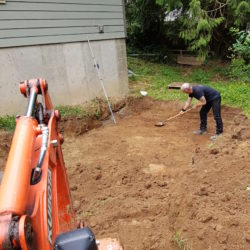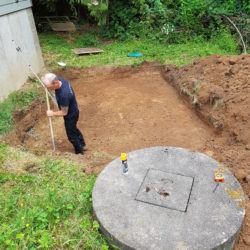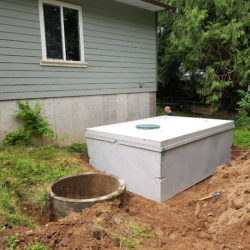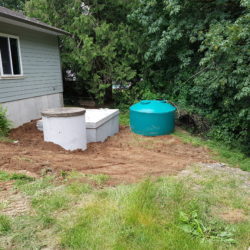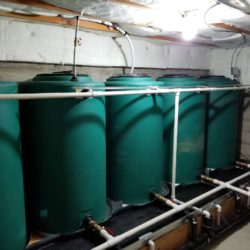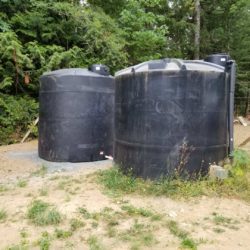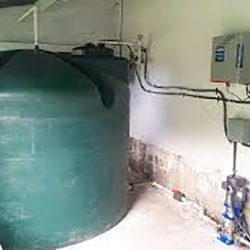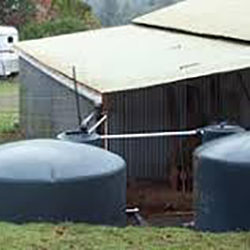The homeowner will be bring the finish grades up and then we will install the Poly plastic tank in the fall to further assist with rain water harvesting and adding to the system.
These pictures demonstrate a cistern system using a 2100IMPG concrete tank for the cistern. The homeowners well does not provide sufficient volume within the dry seasons so utilizing a cistern allows for slow and periodic filling to gain capacity while not taxing the well. The water is then passed through a series of filters and ready for home and yard use.
A rain water collection system will also be added to this system in the future catching gutter and downspout water from the building next to the well and cistern.
We proceed by marking the area and establishing grades to install the cistern, from there plumbing follows from the well to the cistern and fed back to the home using two pumps and a control system. A concrete well riser was installed to assure no ground water seepage was entering the well system as can pose potential bacteria and water contamination.
They may be out of sight…but should not be out of mind!
More and more home owners are installing cisterns as a preventative measure. The flow from the well may be adequate at first, but if there was to be a change in flow rate, or a higher demand, they would be prepared; for example, selling their home to a larger family and increasing the daily load requirements placed on the well. These system are fantastic for assuring adequate gallonage even from a low producing well.
If you are experiencing water shortages due to a low producing well give a cistern some consideration, this can really make the difference for home and building supply and removes the worry of running out of sufficient water requirements.Some acreages produce little or no water, in which case the water would have to be transported by truck and stored in the cistern.









